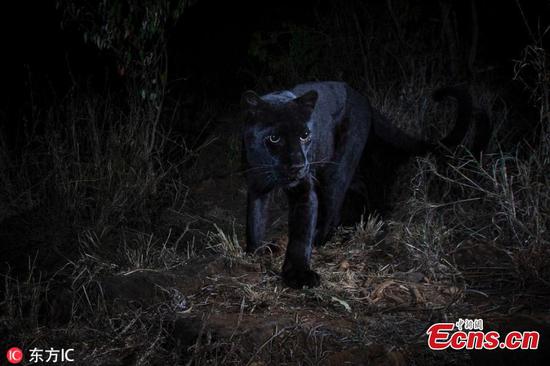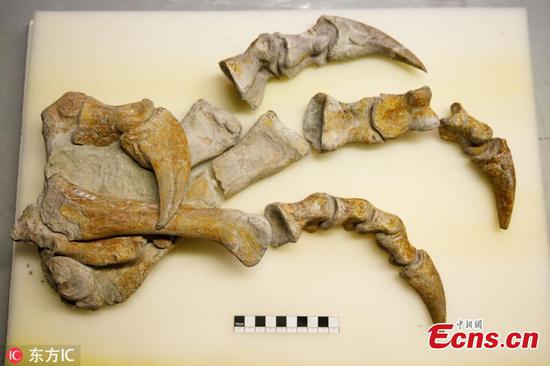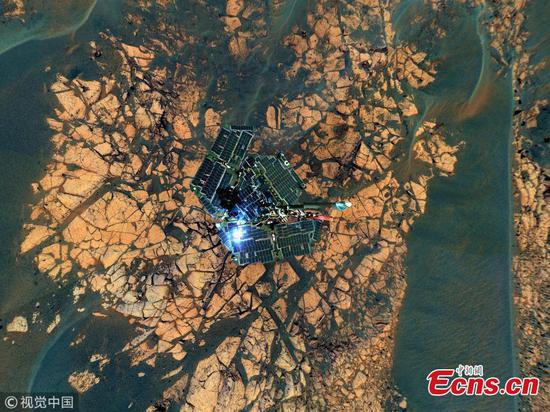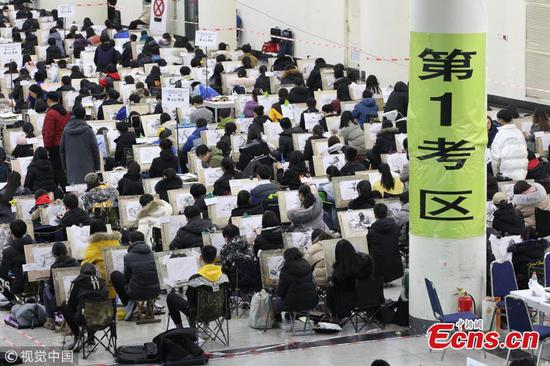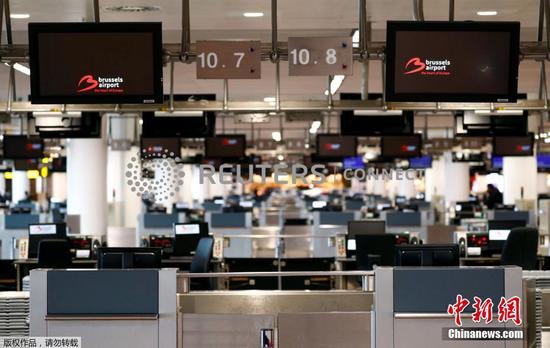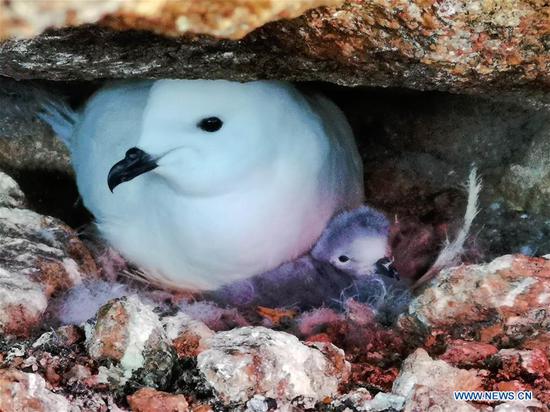
Left: Panoramic photo shows the lander of the Chang'e-4 probe. (Xinhua/China National Space Administration) Right: Looking down on the Chang'e 4 landing site. (NASA/GSFC/Arizona State University)
The United States space agency NASA said Friday that its lunar orbiter has observed the landing site of China's Chang'e-4 lunar probe for the third time, capturing a much sharper view.
NASA's Lunar Reconnaissance Orbiter (LRO) passed nearly overhead the Chang'e-4 landing site on Feb. 1, giving a 0.85-meter per pixel picture of the lander and Yutu-2 rover or Jade Rabbit-2 from an attitude of 82 kilometers, according to NASA.
This view had close to the smallest pixel size possible in the current LRO orbit.
NASA said the rover was 29 meters northwest of the lander, but the rover had likely moved since the image was acquired.
According to NASA, the LRO will continue to image the site as the lighting changes and the rover roves.
On Jan. 30 and Jan. 31, the LRO snapped the landing site for the first and second time respectively, but both in a slant angle, according to NASA.
Chang'e-4 set down on a relatively small farside mare basalt deposit. NASA hoped that China's probe could find out the composition of farside basalts with its visible near infrared spectrometer.
China's Chang'e-4 probe, launched on Dec. 8 in 2018, landed on the Von Karman Crater in the South Pole-Aitken Basin on the far side of the moon on Jan. 3.
NASA announced its plan last month to cooperate with Chinese space authorities to observe a signature of the landing plume of Chang'e-4's lunar lander.









